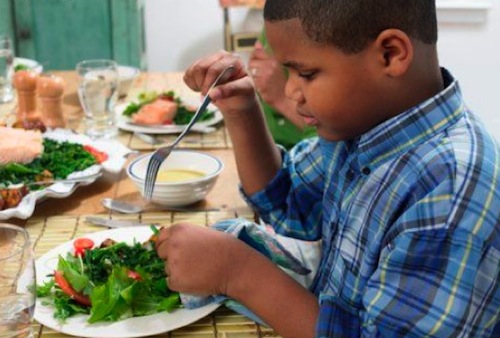Top 8 Food Allergies in Kids and What Parents Need to Know
While groundnut allergies are what parents hear about the most — which makes sense given that the number of kids with peanut allergies has tripled in the past 15 years — there are eight foods that are most likely to trigger an allergic reaction in children:
- Cow’s milk
- Peanuts
- Soy
- Egg
- Wheat
- Tree nuts
- Shellfish
- Fish
These eight ingredients must be listed on all food packaging, the Food and Drug Administration says. Sesame will hopefully be added to the list in the near future.
So, what is a parent to do? Educate yourself so you understand how food allergies can affect children.
Know the difference: Food allergy vs. food sensitivity or intolerance
Be aware that a food allergy is different from a food sensitivity or intolerance. Your child might feel bloated or gassy after having a milk product, but that could be a sign of an intolerance to lactose.
An allergic reaction is an immune system response to a particular food protein. This response would be stronger — including hives, difficulty breathing, bad gut pain, vomiting — and, in the most severe cases, could be life-threatening.
What are the chances my child will have a food allergy?

About 4 to 6 per cent of all children have a food allergy. If a parent has seasonal allergies, asthma or eczema, their kids are at greater risk for any allergic disease. If one of your children has a food allergy, it increases the chances your other children will also be allergic. If this applies to your family, talk to your paediatrician about introducing foods to a new baby.
The good news is that most children will outgrow their food allergy. Approximately 85 per cent of allergies to cow’s milk, soy, egg and wheat will resolve by the time the child is 3 years old; however, one study reports it may take until 6 or 8 years old.
Signs of a food allergy
How do you know if your child is having an allergic reaction? Common symptoms of an allergic reaction are:
- Skin: itching, hives, swelling, flushing and warmth
- Eyes: tearing, redness, itch, swelling
- Nose: runny nose, itch, congestion
- Mouth: itching, swelling of lips, tongue and mouth (which can potentially impair swallowing or breathing)
- Stomach: nausea, vomiting, diarrhoea, abdominal pain
- Airway: chest tightness (trouble speaking or inhaling), shortness of breath, rapid breathing, coughing, wheezing
- Cardiovascular: weak pulse, loss of consciousness, pale appearance, dizziness lightheadedness, increased heart rate, then decrease heart rate
- Neurologic or psychologic: tingling of the mouth and face, feeling of doom
When more than one body system is involved, it isconsidered anaphylaxis. Anaphylaxis is a medical emergency.

Sometimes symptoms of a food allergy are mild. Symptoms can come on rapidly or more slowly, over hours. It is important to monitor your child closely if you think they are having an allergic reaction.
Depending on age, your child may not have the words to describe the reaction they are feeling. Listen for phrases like:
- My tongue is hot or burning.
- My mouth itches or tingles.
- My mouth/throat feels funny.
- Something is stuck in my throat.
- It feels like there are bugs in my ears.
- My tongue feels bumpy.
Very young children may pull or scratch at their tongue or ears, show an increase in drooling or sound different.
I’m concerned my child has a food allergy. Now what?
If you think your child may have a food allergy, stop giving that particular food and others in the same category. So if you think milk is a problem, symptoms would also occur with foods such as yogurt and cheese.
Call your primary care provider for advice. The office may refer you to a pediatric allergist.
An allergist will probably start with a skin prick test, where tiny amounts of the allergen are scratched onto the top layer of the skin. Redness at the spot may indicate an allergy to the food. The allergist may also perform a blood test, which measures the presence of IgE antibodies — the immune reaction — to specific foods.
The only way to be 100 per cent certain your child is allergic to a food is for them to undergo a food challenge. Under close medical supervision at a hospital, the child is given small, increasing amounts of the food until they’ve eaten a full serving, and monitored afterwards.
Treatment for food allergies
Avoiding allergy-triggering food is the No. 1 treatment. That means you’ll become a food detective, scouring nutrition labels to identify allergens from the ingredient list with ease.
You can advocate for your child in all settings and help increase their independence to advocate for themselves.
- Read restaurant menus carefully, ask a lot of questions about ingredients, and request a different preparation if necessary.
- It can also be helpful to give schools and family friends a list of foods your child can’t eat, plus some snacks that they can eat.
- You’ll also want to keep on hand (and be sure the school has):
- Epinephrine autoinjector (EpiPen or Auvi-Q)
- Diphenhydramine (Benadryl®)
- Albuterol (inhaler) if your child is asthmatic
As your child matures, you and your allergist can teach them about their food restrictions and how to ask questions and advocate for themselves.



